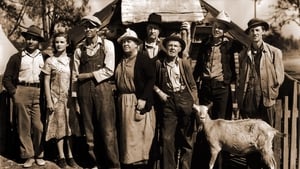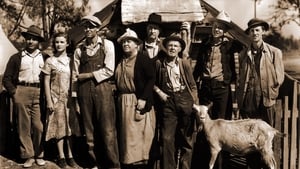Contact: info@alwanfilm.com
Video Sources 0 Views
- Watch trailer
- The Grapes of Wrath


The Grapes of Wrath 1940 Colorized
Synopsis
Table of Contents
ToggleReview: The Grapes of Wrath 1940 Colorized – A Poignant Tale of Resilience and Hope Amidst Adversity

Introduction
“The Grapes of Wrath” (1940) stands as a timeless masterpiece of American cinema, capturing the struggles and triumphs of the human spirit during one of the nation’s darkest periods. In this review, we’ll explore the significance of this classic film, its impact on audiences, and its enduring legacy in the realm of cinema.
Check The Full Colorized Movies List
Check Our Colorized Movies Trailer Channel
Understanding The Grapes of Wrath 1940 Colorized: Director, Cast, and Genre
Directed by the legendary John Ford, “The Grapes of Wrath” (1940) is a cinematic tour de force that showcases his unparalleled storytelling prowess. The film features an ensemble cast of talented actors, including Henry Fonda, Jane Darwell, and John Carradine, who deliver performances that resonate long after the credits roll. Set against the backdrop of the Great Depression, “The Grapes of Wrath” defies easy categorization, blending elements of drama, social commentary, and human drama to create a truly unforgettable cinematic experience.
Exploring the World of The Grapes of Wrath 1940 Colorized: Plot and Characters
At its heart, “The Grapes of Wrath” follows the journey of the Joad family, Oklahoma sharecroppers forced to flee their drought-ravaged farm in search of a better life in California. Led by the determined Tom Joad, played by Henry Fonda, the family embarks on a harrowing journey across the American landscape, facing poverty, prejudice, and despair at every turn. Along the way, they encounter a cast of characters both kind-hearted and cruel, each leaving an indelible mark on their journey of survival and redemption.
The Art of Film Colorization
While “The Grapes of Wrath” was originally filmed in black and white, its impact on audiences remains undiminished by the passage of time. The decision to release the film in a colorized format in later years served to introduce a new generation of viewers to its timeless message of hope and resilience. By adding color to its stark imagery and evocative landscapes, colorization breathed new life into the film, inviting audiences to experience its emotional depth in a fresh and immersive way.
Early Colored Films: A Brief History
The history of colored films dates back to the early days of cinema, with filmmakers experimenting with various techniques to add color to their creations. From hand-painted frames to early Technicolor processes, the evolution of colored film has been marked by innovation and ingenuity. As technology has advanced, so too has the art of colorization, allowing filmmakers to imbue their works with vibrant hues and rich textures that enhance the viewing experience for audiences around the world.
The Grapes of Wrath and Its Early Colored Version
The decision to release “The Grapes of Wrath” in a colorized format was met with both excitement and skepticism. While purists may argue that colorization detracts from the film’s artistic integrity, others see it as an opportunity to introduce new audiences to its timeless themes and universal truths. Whether viewed in its original black and white format or the early colored version, “The Grapes of Wrath” continues to resonate with viewers of all ages, offering a poignant reminder of the resilience of the human spirit in the face of adversity.
The Debate Over Film Colorization
The debate over film colorization is a complex and nuanced issue, with passionate arguments on both sides of the divide. Proponents argue that colorization revitalizes classic movies for modern audiences, breathing new life into timeless stories and introducing them to a new generation of viewers. Conversely, detractors maintain that colorization compromises the artistic integrity of the original work, altering the director’s vision and diminishing the historical significance of the film. Ultimately, the decision to colorize a film is a subjective one, with no easy answers or definitive conclusions.
Examining The Grapes of Wrath as an Early Colored Film
As with any colorized classic, the impact of colorization on “The Grapes of Wrath” is a matter of personal interpretation. Some may argue that it enhances the film’s visual appeal and immerses viewers in its world, while others may feel that it detracts from the stark beauty of the original black and white version. Regardless of one’s stance on the issue, there’s no denying the enduring power of “The Grapes of Wrath” as a cinematic masterpiece that continues to captivate audiences with its timeless themes and unforgettable characters.
Influence and Legacy: The Grapes of Wrath 1940 Colorized’s Impact on Cinema
“The Grapes of Wrath” has left an indelible mark on the world of cinema, inspiring countless filmmakers and audiences alike with its powerful storytelling and social commentary. From its poignant portrayal of the human condition to its stark depiction of economic hardship and social injustice, the film remains as relevant today as it was upon its release. As audiences continue to rediscover this timeless treasure, its legacy will endure for generations to come, serving as a testament to the enduring power of cinema to illuminate the human experience.
Director’s Cinematic Legacy: Beyond The Grapes of Wrath 1940 Colorized
John Ford’s influence extends far beyond “The Grapes of Wrath,” with a prolific body of work that spans multiple genres and decades. From Western classics like “Stagecoach” to epic dramas like “The Searchers,” Ford’s films are celebrated for their masterful storytelling, breathtaking visuals, and unforgettable characters. Through his groundbreaking work, Ford has left an indelible imprint on the world of cinema, inspiring generations of filmmakers to explore the depths of the human experience and the vastness of the cinematic landscape.
Themes Explored in The Grapes of Wrath 1940 Colorized
“The Grapes of Wrath” explores a myriad of themes, from the resilience of the human spirit to the enduring power of family and community. Through its richly drawn characters and evocative imagery, the film invites viewers to contemplate the timeless struggles of poverty, prejudice, and injustice, offering insights into the complexities of the human condition. As audiences immerse themselves in the world of “The Grapes of Wrath,” they are confronted with profound questions about morality, empathy, and the pursuit of justice in a world gripped by hardship and uncertainty.
Reception and Controversy Surrounding The Grapes of Wrath 1940 Colorized
Upon its release, “The Grapes of Wrath” received widespread critical acclaim, with many praising its powerful performances, evocative cinematography, and searing social commentary. However, the film also sparked controversy among some audiences and critics, who found its depiction of poverty and social inequality to be too bleak and despairing. Nevertheless, “The Grapes of Wrath” remains a beloved classic that continues to resonate with viewers of all ages, reaffirming its status as a timeless masterpiece of American cinema.
Where to Watch The Grapes of Wrath 1940 Colorized Online
For those eager to experience the timeless magic of “The Grapes of Wrath,” the film is readily available on popular streaming platforms such as Netflix, Amazon Prime, and Hulu. Whether you choose to watch it in its original black and white format or the early colored version, “The Grapes of Wrath” promises to transport you to a world of hope, resilience, and human dignity amidst the most challenging of circumstances.
FAQs About The Grapes of Wrath 1940 Colorized
Q: Is “The Grapes of Wrath” based on a true story? A: While “The Grapes of Wrath” is a work of fiction, it draws inspiration from real-life events and experiences during the Great Depression, offering a searing portrayal of the struggles faced by millions of Americans during one of the nation’s darkest periods.
Q: Who are the main actors in “The Grapes of Wrath”? A: “The Grapes of Wrath” features a stellar cast of talented actors, including Henry Fonda in the role of Tom Joad, Jane Darwell as Ma Joad, and John Carradine as Jim Casy.
Q: What awards did “The Grapes of Wrath” win? A: “The Grapes of Wrath” received widespread critical acclaim upon its release, winning two Academy Awards for Best Director (John Ford) and Best Supporting Actress (Jane Darwell). Additionally, the film was nominated for five other Oscars, including Best Picture and Best Actor (Henry Fonda).
Q: Why was “The Grapes of Wrath” released in a colorized format? A: The decision to release “The Grapes of Wrath” in a colorized format was made to introduce a new generation of viewers to its timeless message of hope and resilience. While some purists may prefer the original black and white version, colorization offers a fresh perspective on the film’s richly detailed world and evocative imagery, inviting audiences to experience its emotional depth in a new and immersive way.
Conclusion
As we reflect on the enduring legacy of “The Grapes of Wrath,” let us celebrate its status as a timeless classic that continues to captivate audiences with its powerful performances, evocative imagery, and searing social commentary. Whether viewed in its original black and white format or the early colored version, “The Grapes of Wrath” serves as a poignant reminder of the resilience of the human spirit in the face of adversity, offering hope and inspiration to viewers of all ages.
















